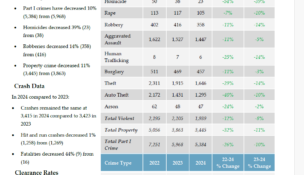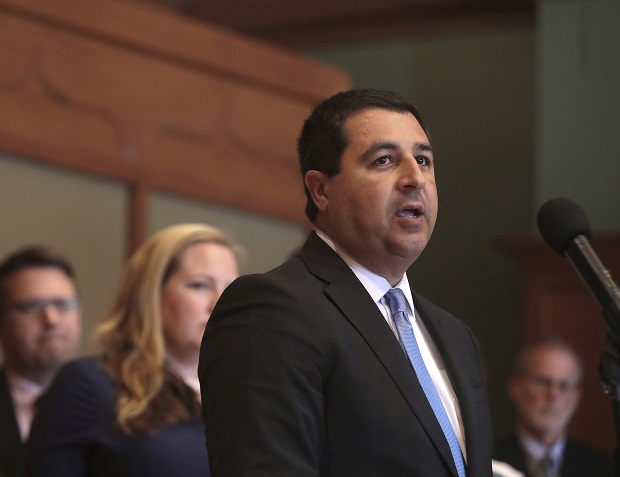Insurance may lead to more suits
By: dmc-admin//May 24, 2010//
 Mandatory auto insurance liability coverage is on the horizon. Combine that with higher minimum requirements already in effect and attorneys are preparing for the possibility of more litigation.
Mandatory auto insurance liability coverage is on the horizon. Combine that with higher minimum requirements already in effect and attorneys are preparing for the possibility of more litigation.
As of June 1, Wisconsin will become the 49th state to require drivers to purchase and provide proof of auto liability insurance.
Penalties will range from a $10 citation for failure to show proof of insurance at the time of a stop to $5,000 for providing fraudulent insurance information.
While some in the legal community are skeptical that the new law will dramatically lower the number of uninsured motorists in the state, they do suggest that there could be greater opportunity to pursue claims in court.
Veteran personal injury lawyer George W. Curtis, Jr. said during the down economy, about a quarter of the accident cases he sees involve someone who has allowed their insurance coverage to lapse.
“Obviously, anything that can be done to decrease that number provides more possibility of compensation to the victim and that’s a good thing,” he said.
Further fueling the potential for recovery is the provision that increased the minimum coverage levels and mandated uninsured and underinsured protection.
On Jan. 1, liability coverage needed to include at least $15,000 for property damage, $50,000 for bodily injury or death of one person and $100,000 for injury or death of multiple people.
Previously, minimums were $10,000, $25,000 and $50,000, respectively.
The law also requires uninsured and underinsured motorist protection with minimum limits of $100,000 and $300,000, respectively, for bodily injury coverage.
Although insurance will be mandatory, Curtis is among those who expect some drivers will still skirt the law, which will mean accidents involving uninsured drivers will still occur.
In those situations, covered parties will likely only be reimbursed for the amount of their policy, as is the case now.
“In most instances, you are stuck with what you purchased,” Curtis said. “But as a practical matter, people will be a lot more aware of the necessity and availability of uninsured, underinsured and medical pay coverage.”
La Crosse litigator Michael W. Gill views the changes collectively as an indicator that there could be fewer settlements because of the higher limits and the theoretical expectation that more drivers will have insurance.
In the past, Gill said insurance companies may have been more likely to pay out a $20,000 claim rather than litigating it and risk a jury awarding more than the $25,000 bodily injury minimum.
Under the same scenario, with a $50,000 policy, Gill said insurance companies might be more inclined to fight the claim in court.
Now, “there is a wider margin for error,” he said.
“The pressure point for a settlement is the policy limits,” added Gill, of Hale, Skemp, Hanson, Skemp & Sleik. “In my opinion, the insurer may say the fair value is $20,000 and if you want $30,000, we’ll litigate the case. The higher limits make settlement a bit less likely.”
Wisconsin Defense Counsel President Catherine M. Rottier said until the mandatory coverage law kicks in, it is hard to predict what will happen.
But she did concede that insurance attorneys may change their strategy as far as how they handle claims.
“It’s a business decision more than anything else,” she said. “It’s helpful where you have higher limits so you are reasonably assured there is no possibility of excess against the insured.”
At the same time, it gives plaintiffs’ attorneys a larger pool to draw from when filing a claim.
According to Andrew Franken, President of the Wisconsin Insurance Alliance, more than 95 percent of claims were under the $25,000 threshold and the new laws could “artificially raise those claims’ costs.”
“The increase in limits will increase costs because the bar has been raised and the amount of dollars on the table will increase,” he said. “There will be those individuals that go after those limits.”
Franken suggested that the number of uninsured motorists will actually increase, because the law changes are driving up insurance costs in the state.
But Curtis argued that liability coverage in serious accident cases doesn’t always cover the cost of medical expenses.
“If you have a series of injuries out of an accident, $100,000 can be used up in one weekend in the ICU,” he said.
Gill acknowledged the political debate of whether an increase in premium costs justifies the additional coverage available for victims of accidents.
But he views the change as good policy in that Wisconsin wants its drivers to be insured.
“From the standpoint of a practicing attorney, whether for the defense or representing the plaintiff, you always prefer to see ample insurance coverage,” he said. “The issue in the case is resolving a claim at fair value rather than worrying about looking for a source of recovery because there was inadequate coverage.”
Jack Zemlicka can be reached at [email protected].
Legal News
- Steven Avery prosecutor Ken Kratz admits ‘mistakes were made’
- Colombian national extradited to Milwaukee faces International narcotics-trafficking conspiracy charge
- MPD: Milwaukee homicides down nearly 40 percent compared to last year
- EVERS: Republican lawmakers No-Show at special meeting to release statewide PFAS funding, stabilize healthcare access
- Wisconsin ICAC Task Force conference on Missing and Exploited Children highlights increase in sextortion cases
- More than 300 Wisconsin officers back in law enforcement after being fired or forced out
- Former Trump staffer who said to ‘fan the flame’ after 2020 loss hired to lead Wisconsin GOP
- Gov. Evers appoints David Casey to Serve as DOR Secretary
- Former Marine sentenced for Molotov Cocktail attack against Planned Parenthood Clinic
- ABA names 34th Annual Margaret Brent Women Lawyers of Achievement Awards honorees
- FBI launches criminal investigation into Key Bridge collapse
- Man charged in slaying after woman’s leg found at Milwaukee-area park
WLJ People
- Power 30 Personal Injury Attorneys – Russell Nicolet
- Power 30 Personal Injury Attorneys – Benjamin Nicolet
- Power 30 Personal Injury Attorneys – Dustin T. Woehl
- Power 30 Personal Injury Attorneys – Katherine Metzger
- Power 30 Personal Injury Attorneys – Joseph Ryan
- Power 30 Personal Injury Attorneys – James M. Ryan
- Power 30 Personal Injury Attorneys – Dana Wachs
- Power 30 Personal Injury Attorneys – Mark L. Thomsen
- Power 30 Personal Injury Attorneys – Matthew Lein
- Power 30 Personal Injury Attorneys – Jeffrey A. Pitman
- Power 30 Personal Injury Attorneys – William Pemberton
- Power 30 Personal Injury Attorneys – Howard S. Sicula











